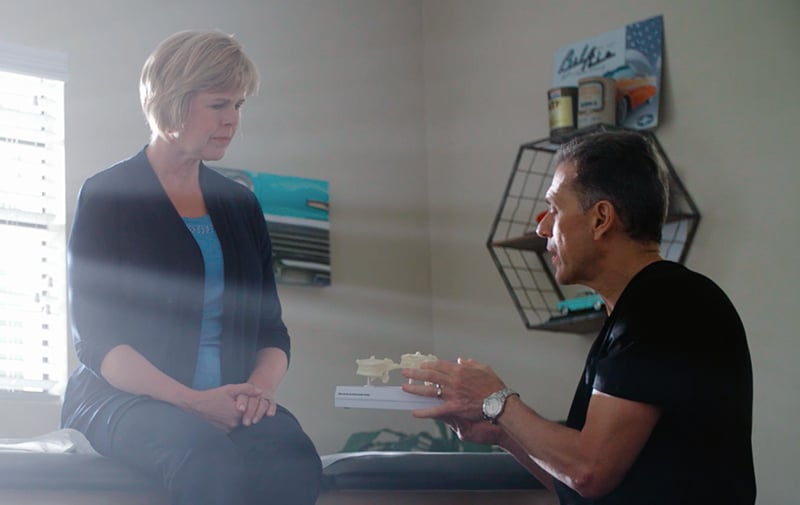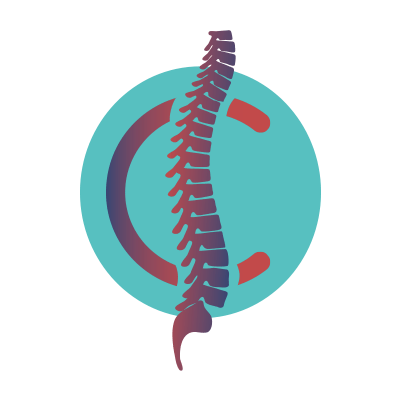Posterior Lumbar Fusion
Citrus Spine Institute specializes in minimally invasive spinal procedures, including posterior lumbar fusions. Learn about what this procedure entails and how it may improve your quality of life.

What Is Posterior Lumbar Fusion?
Posterior lumbar fusion, also known as posterior lumbar interbody fusion (PLIF), is a surgical procedure designed to restore spinal alignment, relieve leg and back pain and prevent further damage to the spinal cord and the nerves. Typically, posterior lumbar fusions are used to treat degenerative spinal changes and injuries that occur in the lower (lumbar) region of the spine.
While it’s the same procedure and provides the same benefits, there are two common approaches your surgeon may take when performing a posterior lumbar fusion: open or minimally invasive. At Citrus Spine Institute, we specialize in minimally invasive posterior lumbar fusions, which have proven to be a more advantageous, effective approach.
Learn More About Minimally Invasive Posterior Lumbar Fusion
There are many different causes for leg and lower back pain, however, conditions that may require a posterior lumbar fusion procedure include:
- Disc herniation
- Degenerative disc disease
- Spinal deformities, such as scoliosis
- Spinal instability, typically caused by degenerative changes such as osteoarthritis or metastatic processes
- Spondylolisthesis
- Spinal column infections
- Spinal stenosis
- A fracture in the spinal column
Three common signs it’s time to consult with a spinal specialist include weakness in or loss of control of your limbs, severe pain that impacts daily activities or pain that doesn’t improve with conservative treatment methods. Your doctor will be able to properly diagnose the cause of the pain and work with you to determine if posterior lumbar fusion surgery is the best option for you.
During a minimally invasive posterior lumbar fusion, your surgeon will make small incisions to access the affected vertebrae. From there, they will remove the damaged disc and shave out the disc space to decompress the spinal cord and nerves. Then, your surgeon will place interbody spacers to maintain proper disc height and fill them with bone graft to promote fusion. The fusion area will be immobilized by titanium rods and screws to ensure proper positioning and healing.
The fusion process happens after the procedure during healing, where the bone graft joins the vertebral bodies together, forming one solid bone.
After surgery, it’s normal to feel pain, soreness and stiffness in your lower back. This will continuously improve as you recover in the weeks following your surgery. Your surgeon may prescribe you pain medications, antibiotics or over-the-counter medicines. They also may prescribe a back brace for additional support and stability, which you will need to wear for all out-of-bed activities for the first four to six weeks post-procedure.
You will also have some physical limitations. While rest is necessary, you will need to do light physical activity like walking to promote healing and recovery. However, you will be restricted from doing activities such as pushing, pulling or lifting items heavier than five pounds, bending forward or backward, twisting the upper body side to side, sitting for long periods of time and driving. Your restrictions will be gradually lifted as you heal, but following them is critical to the fusion process.
Typically between one to three months post-surgery, your surgeon may recommend physical therapy. Your physical therapist will work with you to create a tailored treatment plan and track your progress as you heal and regain strength and mobility. It’s important to follow your doctor’s guidelines closely and attend all physical therapy and follow-up appointments to ensure optimal recovery.
Recovery time varies with each patient and can be impacted by how many vertebrae were affected. It typically takes about three months for the fusion process to start. You can expect to make a full recovery between six months to a year post-surgery.
Your doctor should be able to walk you through all of the risks associated with the posterior lumbar fusions and the chances of complications based on your overall health status and medical history.
There are some general surgery risks associated with posterior lumbar fusions. These include infection, blood clots, excessive bleeding, poor healing, nerve damage, complications from anesthesia and more.
Decreased spinal flexibility that limits your motion is a common risk of spinal procedures, however, this loss is typically not significant. Other risks specific to posterior lumbar fusion surgery include failure to relieve pain, loss of strength and sensation in the legs, incontinence, pseudoarthrosis (what happens when the vertebrae don’t fuse together post-surgery) and more.
Compared to open posterior lumbar fusions, minimally invasive posterior lumbar fusions minimize blood loss and muscular retraction/stripping, providing much more successful outcomes regarding recovery times, lower blood loss and less postoperative pain. The procedure and its long-term results have proven to be highly effective and successful.

The Citrus Spine Difference
For us, the patient remains the king, in everything that we do.
01
02
03
04
Dr. Toumbis was one of the chief designers of the systems, implants, and accompanying instruments used in this surgery, including the titanium plate, screws and more, which are used in this procedure.
What to Know Before Posterior Lumbar Fusion
Due to the challenges of using a more minimally invasive technique for posterior lumbar fusion, it is highly encouraged that patients have and maintain an optimal body weight in order to achieve the best surgical outcome.
Ask your doctor how to best prepare for your procedure in the days and weeks before surgery. Follow their recommendations and keep them updated with any changes in the days leading up to your surgery.
Wondering If Posterior Lumbar Fusion Is Right for You?
The first step to finding out if posterior lumbar fusion is right for you is to consult with a back pain specialist. When it comes to minimally invasive spinal procedures, it is important to contact an orthopedic spine surgeon who has the experience and expertise to successfully recommend the right solution for you. Schedule an appointment today to learn if posterior lumbar fusion is what you need.



